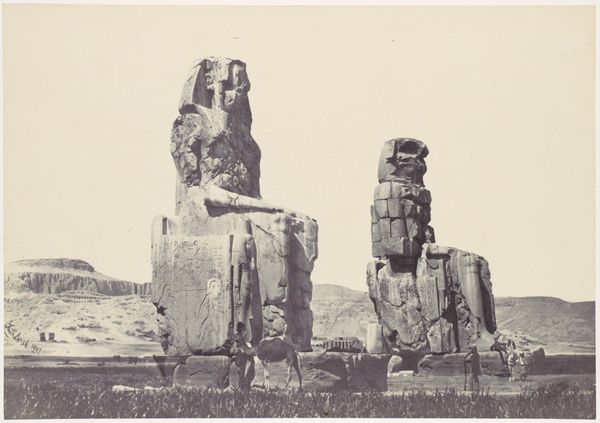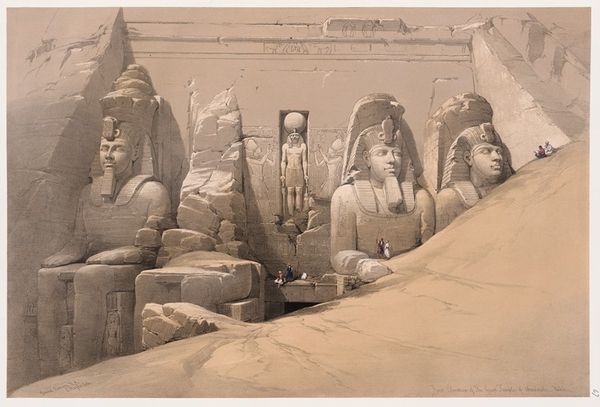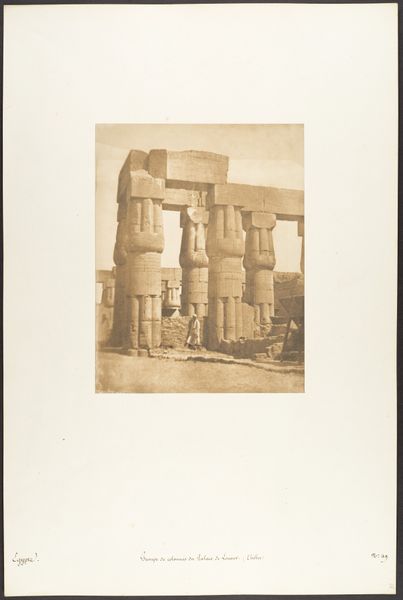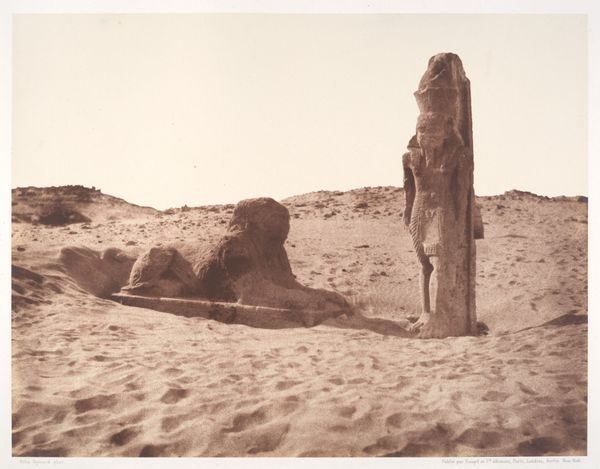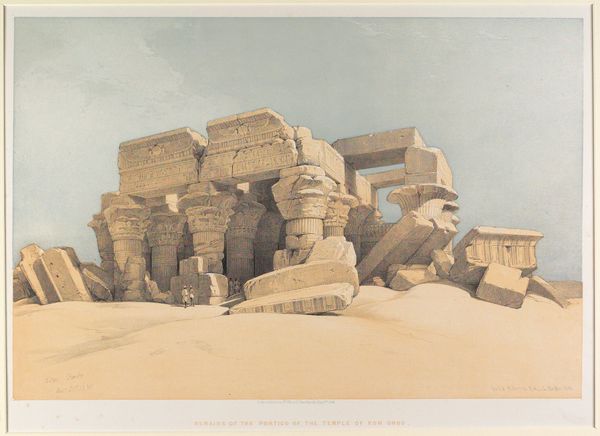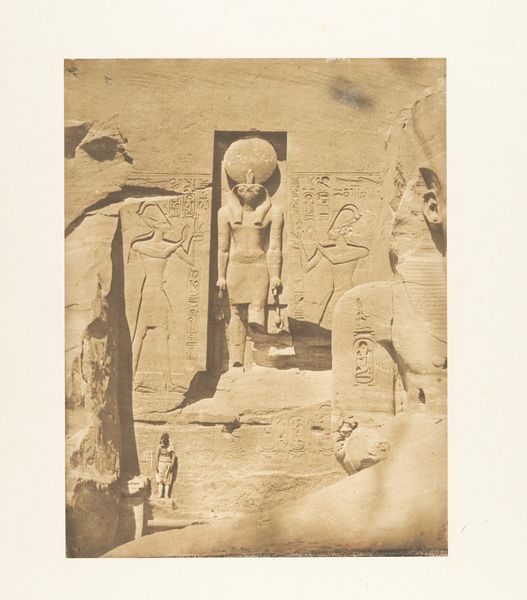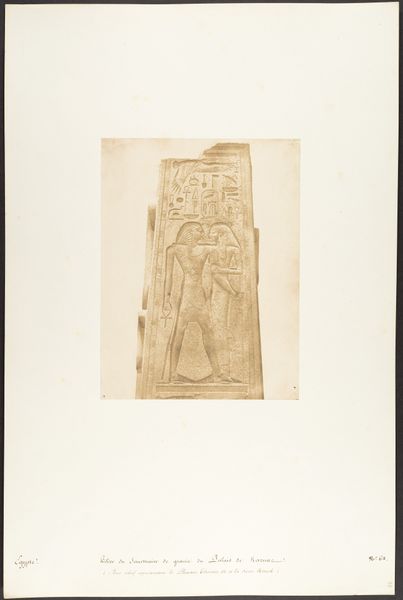
drawing, watercolor
#
drawing
#
sculpture
#
landscape
#
ancient-egyptian-art
#
charcoal drawing
#
watercolor
#
ancient-mediterranean
#
watercolour illustration
#
watercolor
#
realism
Copyright: Public Domain: Artvee
David Roberts made this watercolor painting of the Colossi of Memnon in Thebes, Egypt, in 1838. These massive statues, originally part of Amenhotep III's mortuary temple, became potent symbols of antiquity and imperial power, ripe for artistic appropriation during the age of colonialism. Roberts, a Scottish painter, capitalized on the burgeoning European interest in the Middle East. His detailed and picturesque depictions catered to a Western audience eager for exotic, yet easily digestible, views of distant lands. The figures scaling the statues emphasize their immense size, reinforcing the sense of wonder and the perceived dominance of ancient civilizations. But there are also more recent figures who are part of Roberts' own entourage. This work, like many Orientalist paintings, operates within a complex framework of cultural exchange and power dynamics. To fully understand its meaning, we need to look at travelogues, colonial records, and the artist's biography, placing it within the broader context of 19th-century European imperialism and its fascination with the 'Orient.'
Comments
No comments
Be the first to comment and join the conversation on the ultimate creative platform.
